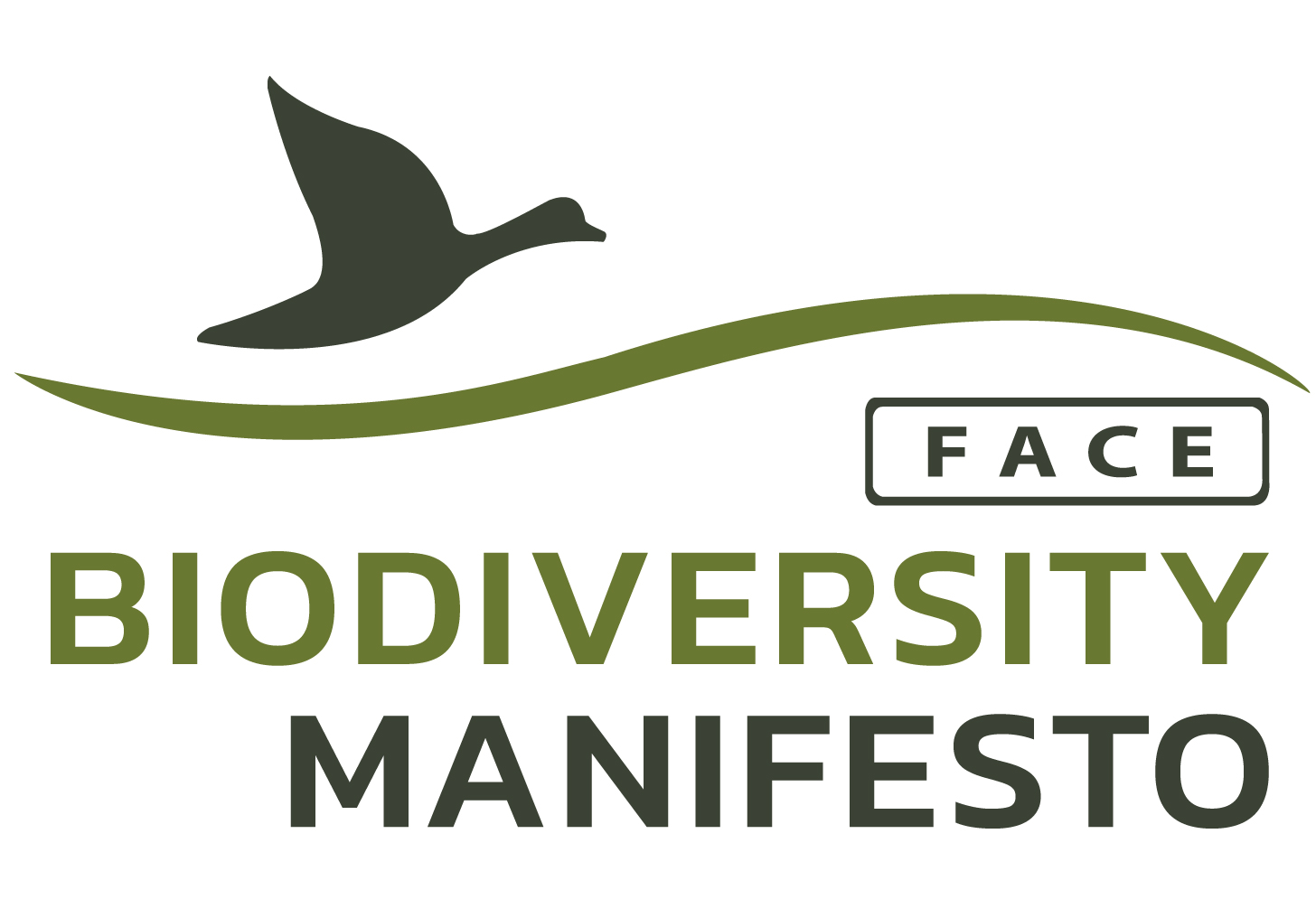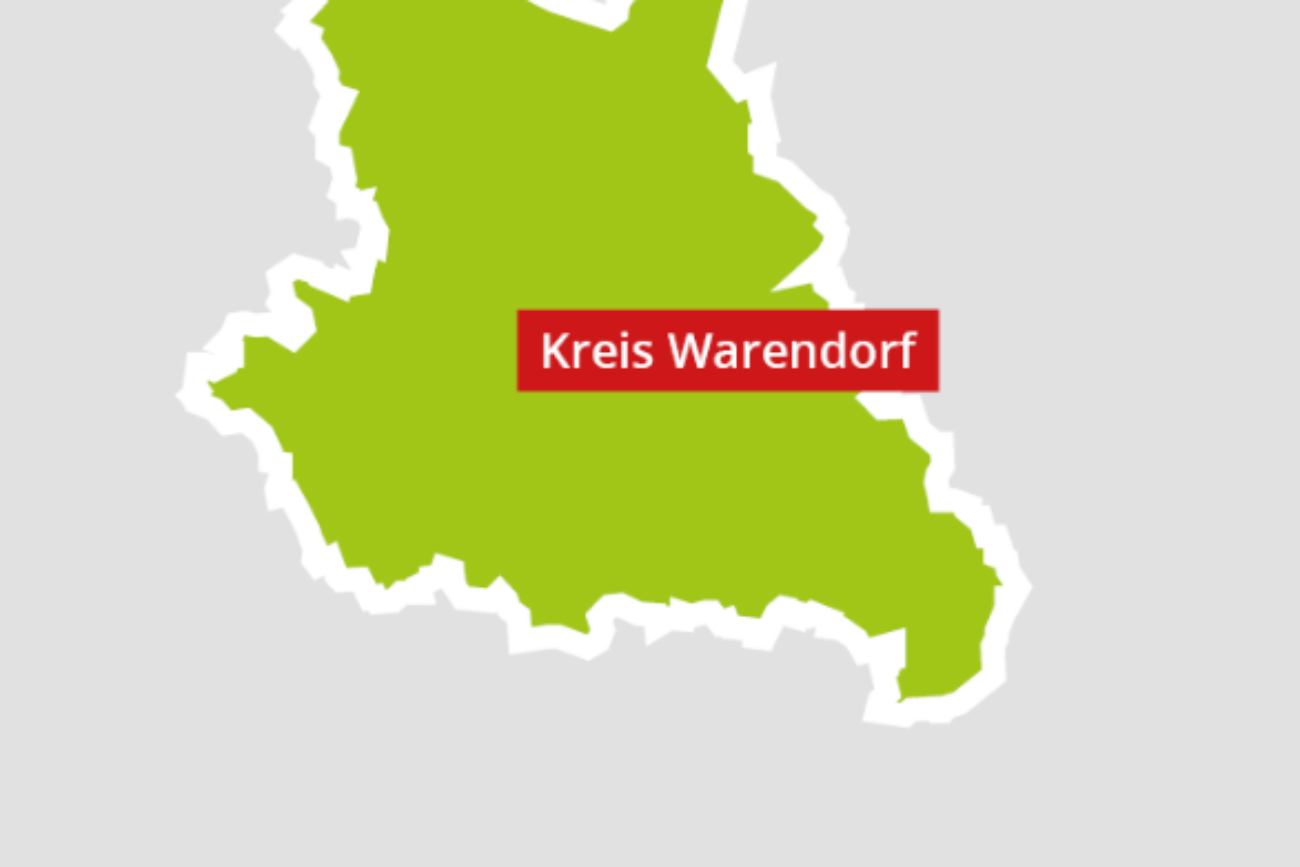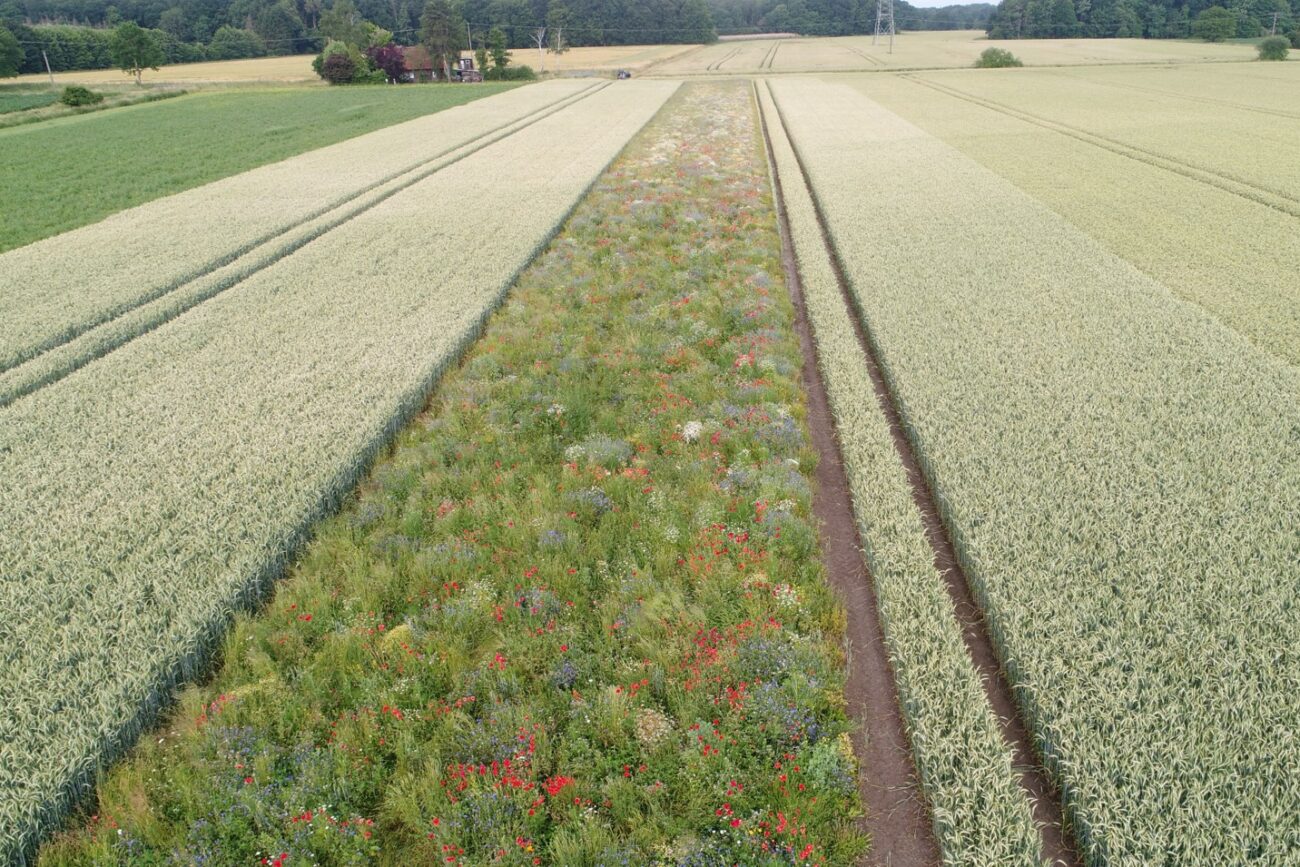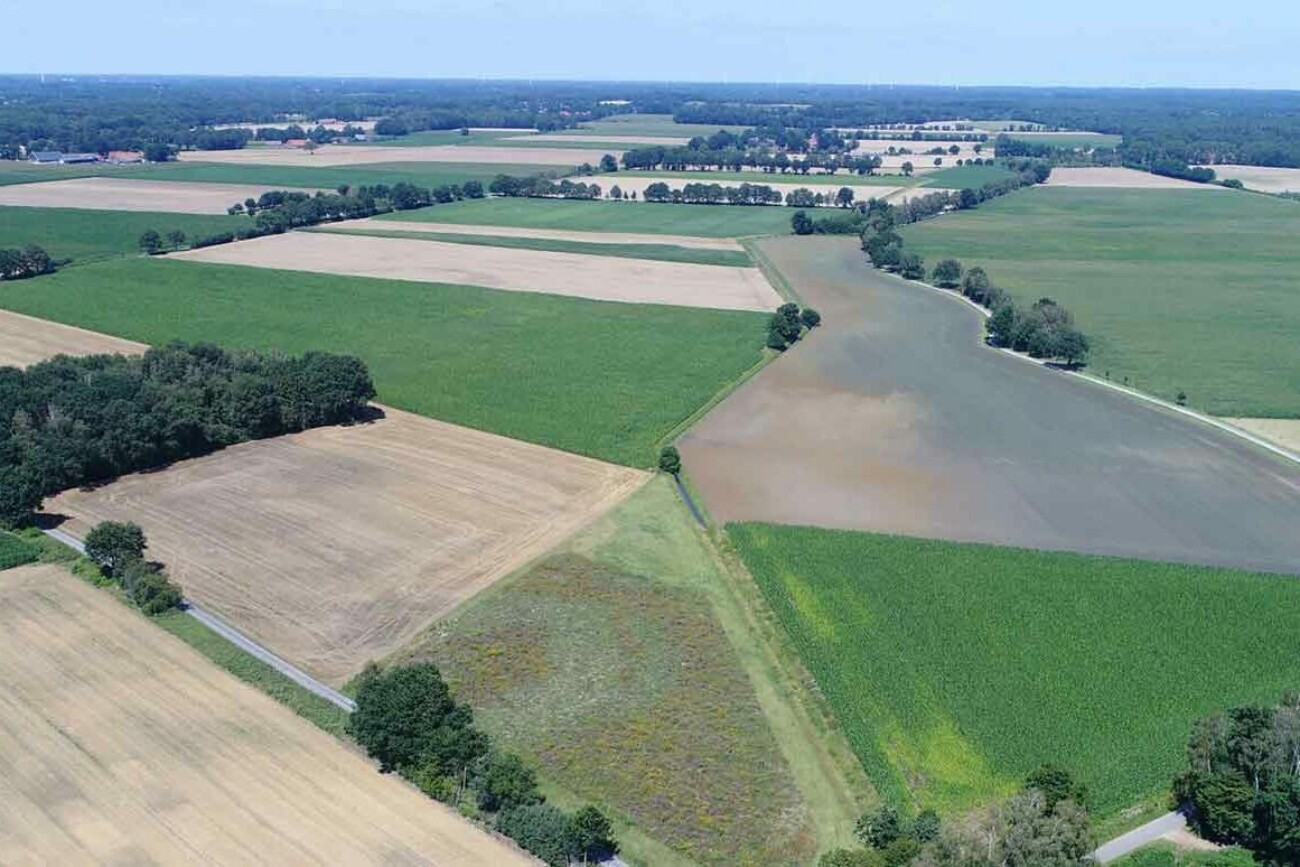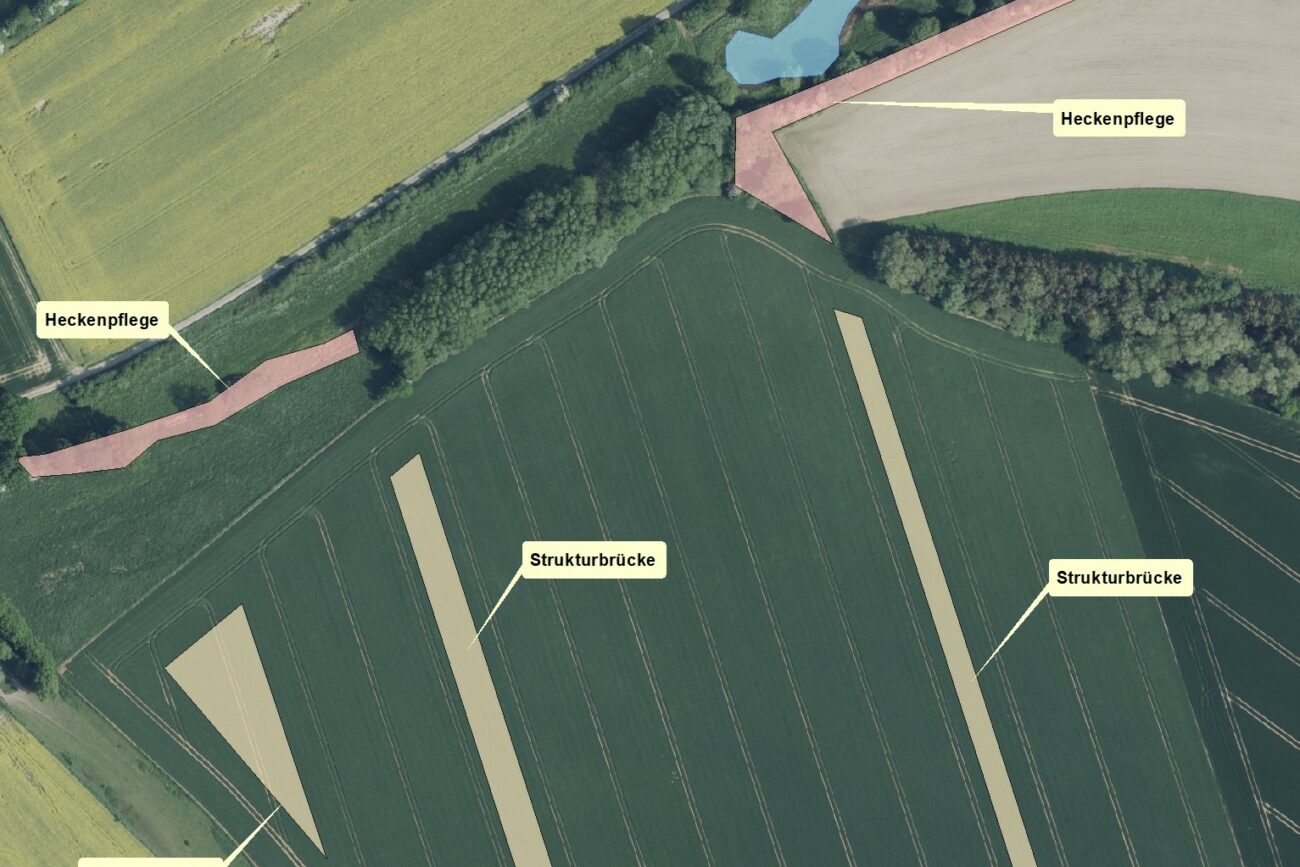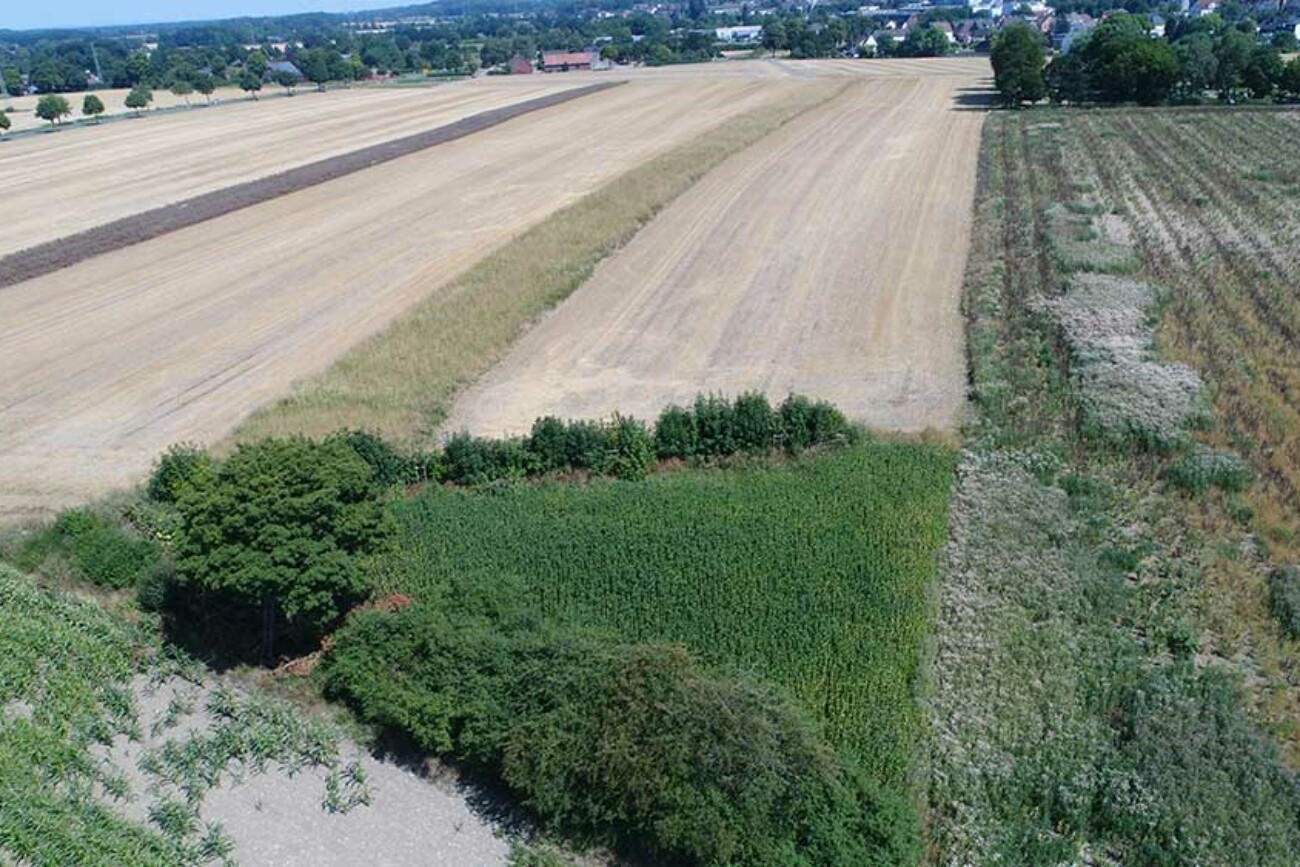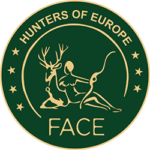The Warendorf district is a district in the heart of Westphalia-Lippe that is rich in wildlife and structure. Hedges, forests and agricultural land run through the district. Despite the rich structure, the populations of open land species are declining. The reasons are varied and can be attributed not only to changes in land management methods as a result of modern agriculture but also to increasing habitat loss or losses due to predators. Quail, partridge, pheasant, lapwing, hare and others have experienced dramatic population declines, especially in the last 20 years.
The W-Land project is an implementation-oriented project of the Warendorf District Hunting Association and the Warendorf district: It is intended to improve the habitat in the cultural landscape and make it more attractive for open land species.
Together with all land users and owners from agriculture, forestry and hunting, various measures are adapted and planned for the respective location and funding opportunities are developed and implemented.
Who: All land users, landowners, maintenance associations, district owners, district tenants and farmers from the Warendorf district who are interested in nature conservation can take part.
What: Implementation of biodiversity measures and advice on predator management
When: Since September 2020
How: Registration with the Westphalian Cultural Landscape Foundation
Further information on participation is available from the KJS Warendorf and the Lower Nature Conservation Authority of the Warendorf district
EU Policy Relevance
The W-Land project aligns with key goals of the EU’s Biodiversity Strategy for 2030, which emphasizes reversing biodiversity loss, restoring ecosystems, and promoting the multifunctionality of rural landscapes. By upgrading unused areas and fostering biodiversity through the use of native plants and wildlife-friendly measures, the project exemplifies how local initiatives can contribute to the EU’s overarching vision for sustainable land management. Habitat fragmentation and intensive land use are major challenges addressed by the project, reflecting the EU’s aim to reconnect ecosystems and support pollinators and other vulnerable species.
Moreover, the W-Land hunters’ collaborative approach—working with farmers and securing long-term agreements—demonstrates how private initiatives can complement EU policies, such as the Common Agricultural Policy (CAP), by integrating biodiversity considerations into agricultural practices. Their success serves as a model for other hunting associations, illustrating how local efforts can make a tangible impact on Europe’s biodiversity and inspire further conservation-driven action.
Conservation Measures:
- Structural bridges
- Hedge and forest border maintenance
- Pond creation
- Field ditches
- Contractual nature conservation
- Predator management
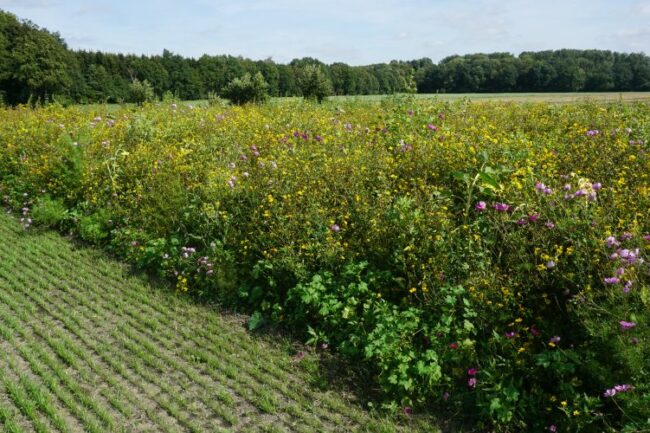
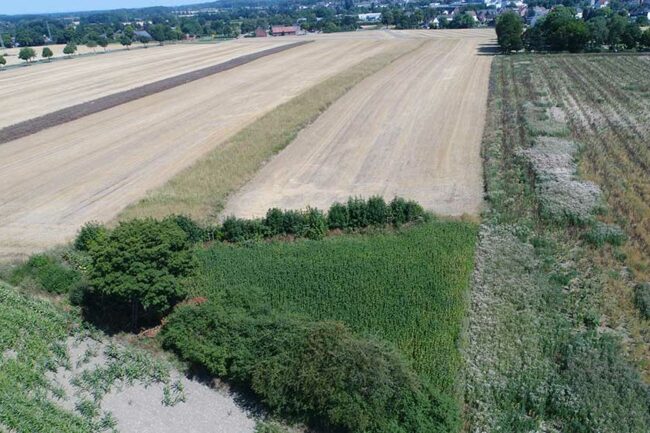
Structural bridges
Structural bridges bring biodiversity to winter cereal fields. The principle is simple: existing fields are loosened up and structured by flower strips and flowering areas. While the surrounding cereal is harvested after it has ripened, the flowering area remains and bridges the time until the next plant growth of the surrounding cereal. The flowering mixture of regional herbs developed especially for this project remains on the area from the sowing of the winter cereal until the sowing of the subsequent crop, thus increasing biodiversity. This means that the open land species find cover and food all year round. The cultivation of the arable land is hindered as little as possible with this method and a
safe distance is maintained from disruptive structures such as roads, trees and overhead power lines. The wider the structural bridges are, the lower the predation pressure on the open land species.
The great advantage of the measure is that it is easy to use for the farmer. The farmer can enter the structural bridge in the ELAN as a “flowering and hunting corridor” and does not need to mark any areas. The total area can be up to 20% of the field (information without guarantee). The headlands are not drilled so that the flowering areas can be “bypassed” cleanly. This means that farming is only slightly affected.
The implementation of this measure is designed in accordance with current funding requirements to ensure maximum practicability for agricultural businesses while at the same time achieving the highest ecological effectiveness and is intended to serve as a model for cooperative nature conservation measures.

Hedges are important landscape elements and can be designed with rich structure using simple measures
Hedge and forest edge maintenance
Some animal species in the cultural landscape seek proximity to hedges and forest edges. The aim of the W-Land project is to specifically maintain such areas by creating structures. Missing hedges can be replanted or existing ones cut back. If such measures are carried out at intervals, they are further enhanced by different growth stages and can keep hedges and forest edges attractive for years.
The often dense forest edge is thinned out and made attractive for a wide variety of animals with the help of structure-forming trees: the targeted removal of individual trees in the forest edge area, for example, improves the incidence of sunlight and creates a structurally diverse forest edge for a variety of inhabitants.
Pond creation:
Water is the most important element in our landscape. Almost every species depends on water surfaces.
Many small bodies of water silt up or become silted over time. We plan water management measures with you with the aim of ecologically optimizing the water and its edges. Examples of this include cutting back pastures, the targeted removal of non-native trees or dredging. We plan the project together and support you with the technical implementation or possible funding.
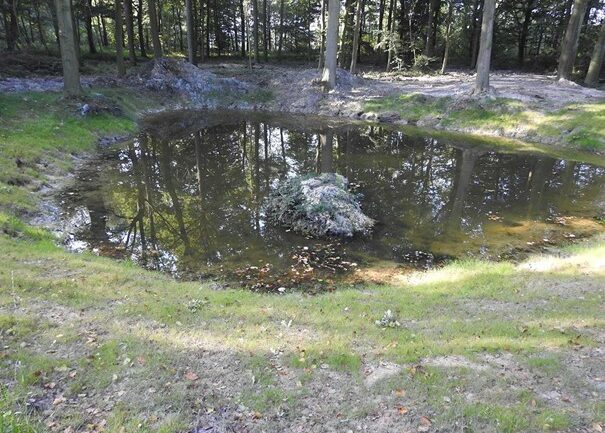
Waters are an important building block for small game species as well as for amphibian and insect species
Field ditches:
Ditches provide structure and are the lifeblood of the cultural landscape. There are many ways to improve ditches. Even one-sided mowing preserves old grass structures that are attractive to ground-nesting birds and insects and at the same time guarantee water drainage. In this way, attractive retreats for insects and wild animals can be preserved in the fields with relatively simple measures.
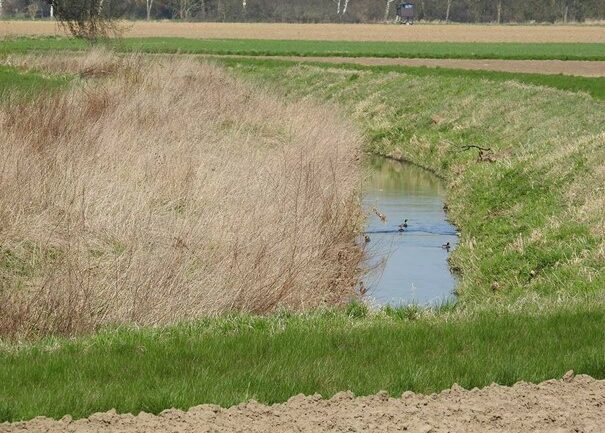
Half-mown ditches create structures
Contractual nature conservation:
In addition to the project’s own measures, ecologically valuable measures from the area of contractual nature conservation can be planned. In particular, combination measures of fallow land, flower strips or extensive grain cultivation can be encouraged.
Predator management:
In addition to the measures for biotope and habitat design, the aspect of predator influence is also examined. Together, an individual predator management can be planned and adapted precisely to the territory conditions and circumstances.
Conclusion:
This article only briefly covers the extensive work of the W Land project. They have completed several projects on species protection, habitat restoration as well as emphasising the cultural landscape of this part of Germany (Münster, Westphalia-Lippe). FACE is proud to promote gold standard projects like W-Land that prove the effectiveness of Hunter – farmer cooperation for Biodiversity.
For more information about the project, visit: https:/www.kulturlandschaft.nrw/w-land/
https://kjs-warendorf.de/w-land/
Source:
Michael Stotter M.Sc. Agricultural Sciences (W-Land)
